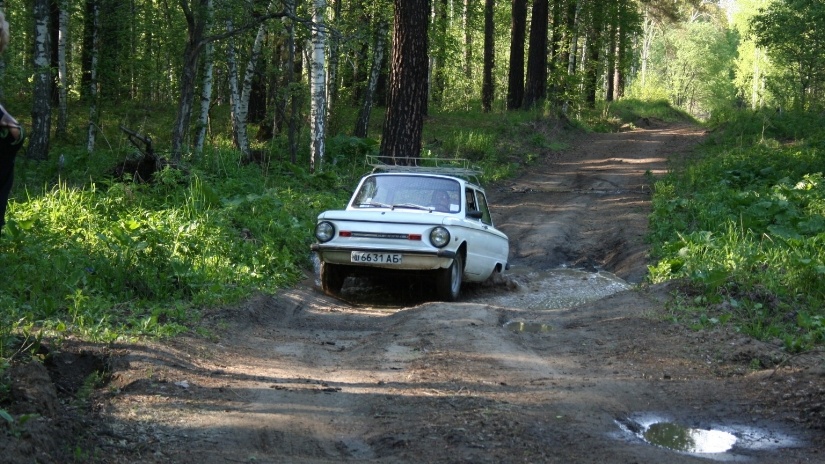 A fleet manager’s core responsibilities are to ensure their fleet runs effectively and efficiently. In the ‘good old days’ it was possible to run an effective fleet and turn a decent profit without obsessing over efficiency too much – as long as you kept costs within a specified budget, you were OK. But these days, it’s impossible to reach desired (or any) profit margins unless you’re running at optimum efficiency.
A fleet manager’s core responsibilities are to ensure their fleet runs effectively and efficiently. In the ‘good old days’ it was possible to run an effective fleet and turn a decent profit without obsessing over efficiency too much – as long as you kept costs within a specified budget, you were OK. But these days, it’s impossible to reach desired (or any) profit margins unless you’re running at optimum efficiency.
Hierarchy and tradition can overtake the common sense approach to choosing fit for purpose cars for your fleet. Is your driver using his small car on dirt roads? Here’s why it makes a difference where your cars are driven.
Small cars and dirt roads
The only way to ensure your fleet is running efficiently is to ensure all your vehicles are fit for purpose (FFP) – that each vehicle is acquired with a specific role in mind and then used for that role. Once you start losing site of FFP, you quickly lose out on efficiency.
Many companies, for example, will purchase ‘run-around’ or small delivery vehicles without doing much research. They’ll opt for the cheapest sedan or panel van, and then spend months or years regretting the decision as they didn’t consider the following factors:
- What will the vehicle be used for? If the vehicle is being used to transport heavy loads (a few hundred magazines, for example, quickly becomes a surprisingly heavy load), fleet managers need to consider the capabilities of the vehicle. It may have enough load space, but might not have a very strong suspension setup. This will lead to increased maintenance and repair costs as the vehicle won’t be able to keep up with the work demanded of it.
- Where will the vehicle be driven? Expected routes are a big deciding factor when adding vehicles to a fleet. If, for example, the routes often include dirt roads or areas where roads are poorly maintained, a small hatchback is not the best solution. This also applies if your driver takes the vehicle home with them, and their roads home are in poor condition or not tarred. Even if it’s not required to carry a lot of cargo, it still makes more sense to get a vehicle with higher ground clearance in this scenario. You save on maintenance and repair costs and the vehicle is likely to stay in good condition for longer if it’s specifically built to handle tougher roads.
- Under what traffic conditions will it be driven? This aspect often tends to fall under the radar. A company that needs vehicle for on-road salespeople may be tempted to purchase entry-level sedans with a manual gearbox – they’re usually the cheapest in the range. If these cars are going to be driven in heavy stop-start traffic most of the time, however, it may be more efficient to opt for automatic vehicles with a stop or start function (that switches the engine off instead of idling). However, stop or start engines are not always the most efficient as it truly depends on the driving conditions, and this is where companies can benefit from seeking the advice of an experienced fleet management company as they will have all the comparison data necessary to make the right choice.
In addition to the above considerations, fleet managers often have to deal with company hierarchy and tradition when it comes to choosing vehicles for the fleet. And hierarchy and tradition don’t always benefit overall efficiency.
Company tradition and hierarchy
It may be company tradition that the delivery driver uses the smallest and least expensive vehicle, but when you look at the demands placed on this car it doesn’t make financial sense. A better option (as mentioned above), may be to opt for a slightly more expensive and capable vehicle that will no doubt last longer and need fewer repairs.
Many fleet managers will know that company hierarchy often dictates what type of vehicle specific employees should drive.
According to Willie Venter, former Fleet Consulting Manager at EQSTRA Fleet Management, “Fleet Managers often have a difficult job motivating why junior staff need to be allocated larger and sturdier vehicles. We help our clients work out exactly which vehicles are fit for purpose for all job levels in the company and then make vehicle recommendations based on overall purpose and efficiency. Choosing vehicles based on hierarchy is extremely inefficient and doesn’t take fit for purpose into consideration at all.”
This doesn’t mean all directors should immediately be put into Tuk-Tuk’s, but it does mean that staff vehicles should be bought with the vehicle’s purpose in mind, and not the designation of the employee.
“We advise all our clients to do a fit for purpose cost comparison as it’s the only way to ensure you’re putting the right vehicles onto your fleet, at the best possible price”, says Willie.
Fit for purpose should be a key consideration when selecting vehicles for your staff, as you can see, and a lot of factors need to be considered when picking out cars for your fleet.
Download your fit for purpose guide below!
